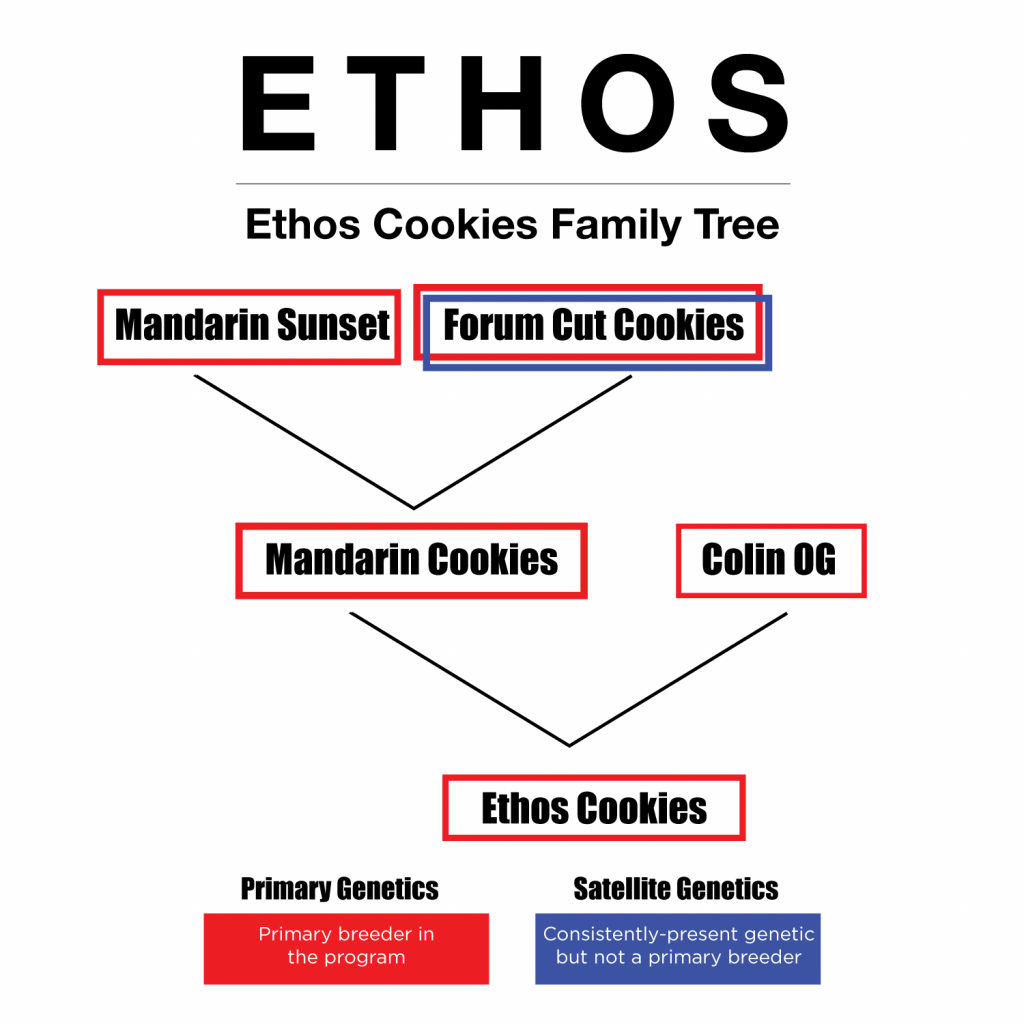What's an F1?
THE TRIGONOMETRY OF GENETIC LINEAGE

In genetics, it is common to see F1 as an indicator or label on different varieties.
F1 stands for the first generation of offspring from two unrelated parental varieties. Typically, the term is used to indicate the first crossing of two genetics.
What is an F1?
According to Merriam-Webster, the medical definition of F1 is “the first generation produced by a cross and consisting of individuals heterozygous for characters in which the parents differ and are homozygous.”
Parents are often designated as P1 and P2 but are of the same parental generation. The first set of offspring are F1, and then two F1’s would breed to produce an F2 and so forth.
The Trigonometry of Genetic Lineage
Just like a family tree and an offspring, each genetic is made up of three parts: the two parents and the offspring.
AB = A x B
When reading genetics, the female (pollen recipient) is always on the left/the first parent genetic listed. On the right side (or the second genetic listed) is the pollen donor, either a reversed female or a chosen male. This is in line with agricultural standards.
So, A is the pollen recipient, and B is the pollen donor.
Trigonometry of Breeding
Similar to mathematics, these genetic breakdowns follow specific patterns.
There is an intentional order to this genetic breakdown.
For Example:
In a Haze x Afghan cross, the Afghan plant donates pollen to the Haze plant.
Haze is P1. Afghan is P2.
Haze x Afghan F1 = P1 x P2
Haze x Afghan F2 = F1 x F1
F2 = (Haze x Afghan) x (Haze x Afghan)
Strain X (F1) is made from parents #1 x #2
F1 = P1xP2
F2 = F1xF1
In a backcross, a filial offspring is crossed with one of the original parents. The first
filial generation of a backcross is indicated by Bx1.
Haze x Afghan Bx1= F1 x Afghan (P1)
Bx1 = (Haze x Afghan) x Afghan (P1)
Applying the Formula to Ethos Genetics

End Game = Ethos Cookies #4 x (Ethos Cookies #16 x Cherry Punch)
In this example, EC#4 was the recipient. The pollen donor was the offspring of the cross of End Game (EC#16 x Cherry Punch). In the EC#16 x Cherry Punch cross, EC#16 received pollen from the
Cherry Punch.
End Game = A x (B x C)
Similarly:
Colin OG = (Deadhead x Chem 4 OG)
EC#16 = (Mandarin Sunset x Forum Cookies) x Colin OG
OR
= (Mandarin Sunset x Forum Cookies) x (Deadhead x Chem 4 OG)
For this reason, offspring can share expressions even if the direct parents are not identical. Chem D and Grandpa’s Stash will clearly share genetic markers due to the common lineage of OG and Skunk in their genetic triangles. If you ran 10-20 seeds of Grandpa’s Stash, it’s probable that you would find a pheno that would resemble the cut of Chem D.

If you ran 30-50 seeds, it’s likely. If you ran 100 seeds, definitely. If you ran 1000 seeds, you’d find a Chem D pheno for sure.
Looking at a genetic’s lineage, and the shared markers of its parents and grandparents can offer insight into the potential expressions you may find in your hunt.
Subscribe to our Substack to receive new content automatically
This article is featured in Vol. 2 of The ETHOS Magazine.
Grab a collector's edition of the ETHOS magazine in print HERE.